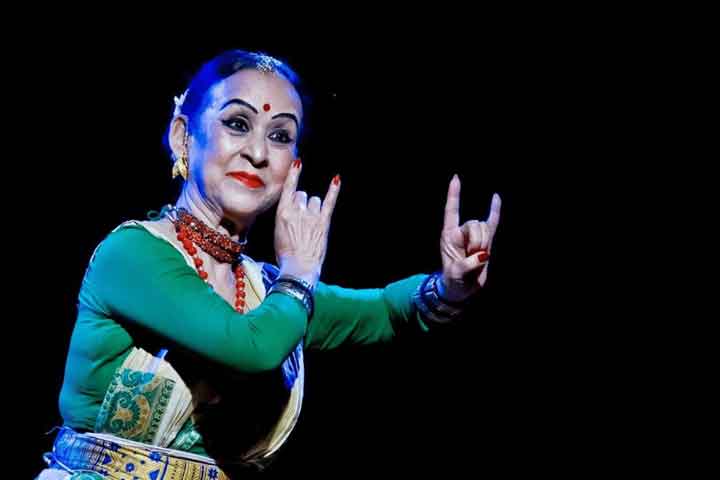Indira PP Bora: The Woman Who Breathed Life into Sattriya Dance
India is a country brimming with cultural heritage and an extensive array of classical dance forms. But not all have received the recognition they deserve. One such form, the Sattriya dance of Assam, has languished in the shadows, longing for a platform to shine. Padma Shri awardee, Indira PP Bora, renowned for her proficiency in Bharat Natyam, Kuchipudi, and Sattriya dance, talks candidly about her mission to bring Sattriya to the forefront.
Bora’s vibrant journey into the world of dance began in the lush green tea plantations of Sonari, Sivasagar District, where she spent her childhood, fueled by an insatiable passion for dance and play. Bora, even at 75, is a living testament to the vitality of dance, stating, “Everybody gets old, but that should not become a hindrance in caring for your fitness.”
Her love for dance eventually led her to Chennai, where she trained under the legendary Guru Rukmini Devi Arundale at the world-renowned Kalakshetra for 15 years. Post her Bharat Natyam training, she learned Kuchipudi from Guru VempatiChina Satyam. “I was never put under any pressure unlike the children of today,” Bora fondly reminisces about her freedom-filled childhood.
Encouraged by her late husband, Prafulla Prasad Bora, she turned her passion into her profession. Bora’s husband established Kalabhumi in 1982, the first centre for dance, art, and culture in North-East India, a haven for nurturing talent. He also provided Bora with the platform to bring Sattriya into the national limelight.
Bora’s indomitable spirit and love for Sattriya did not stop at national borders. She was the first dancer to perform Sattriya and Devadasi dance on BBC TV in London in 1985, and the first Indian dancer to archive her Sattriya dance compositions at the prestigious Lincoln Centre for Performing Arts in New York City, USA. “Sattriya dance has now spread across Assam, but sadly nobody has been able to rise,” she laments, emphasizing the need for more platforms for classical dances.
The dance form, which started under the patronage of SrimantaSankaradeva over 500 years ago, owes its popularity and recognition as a classical dance form in large part to Bora. The Kerala Government acknowledged her efforts by awarding her the Guru Gopinath DesiyaNatyaPuraskaram, a recognition she is profoundly proud of.
The mother-daughter duo of Indira PP Bora and Meneka PP Bora has become the epitome of passion and dedication towards Sattriya dance. Bora’s advice to aspiring dancers, however, reflects her pragmatic view on the current status of dance in India, “They should go and learn from good gurus. Apart from dance, they should have a good education. In our country, for culture, there is no money. That is why I advise you not to take up only dance, but continue with your education as well.”
While Bora recognizes the popularity of Bihu tolis in promoting folk dance, she mourns the lack of similar platforms for classical dances. Her mission is clear: to bring about a resurgence of Sattriya and other classical dances. “I have made up my mind that the younger generation should get a bigger platform,” she states decisively.
As one of the first female pioneers in the realm of Sattriya dance, Bora’s life, filled with vibrant rhythms and fluid movements, is an ode to her unyielding spirit and unending love for dance. Her journey underscores the fact that with passion, determination, and a dash of fearlessness, one can carve out spaces where none existed before, just as she did for Sattriya.
Source: the-think.co
17 Jun 2023,15:16
















 Live Tv
Live Tv
